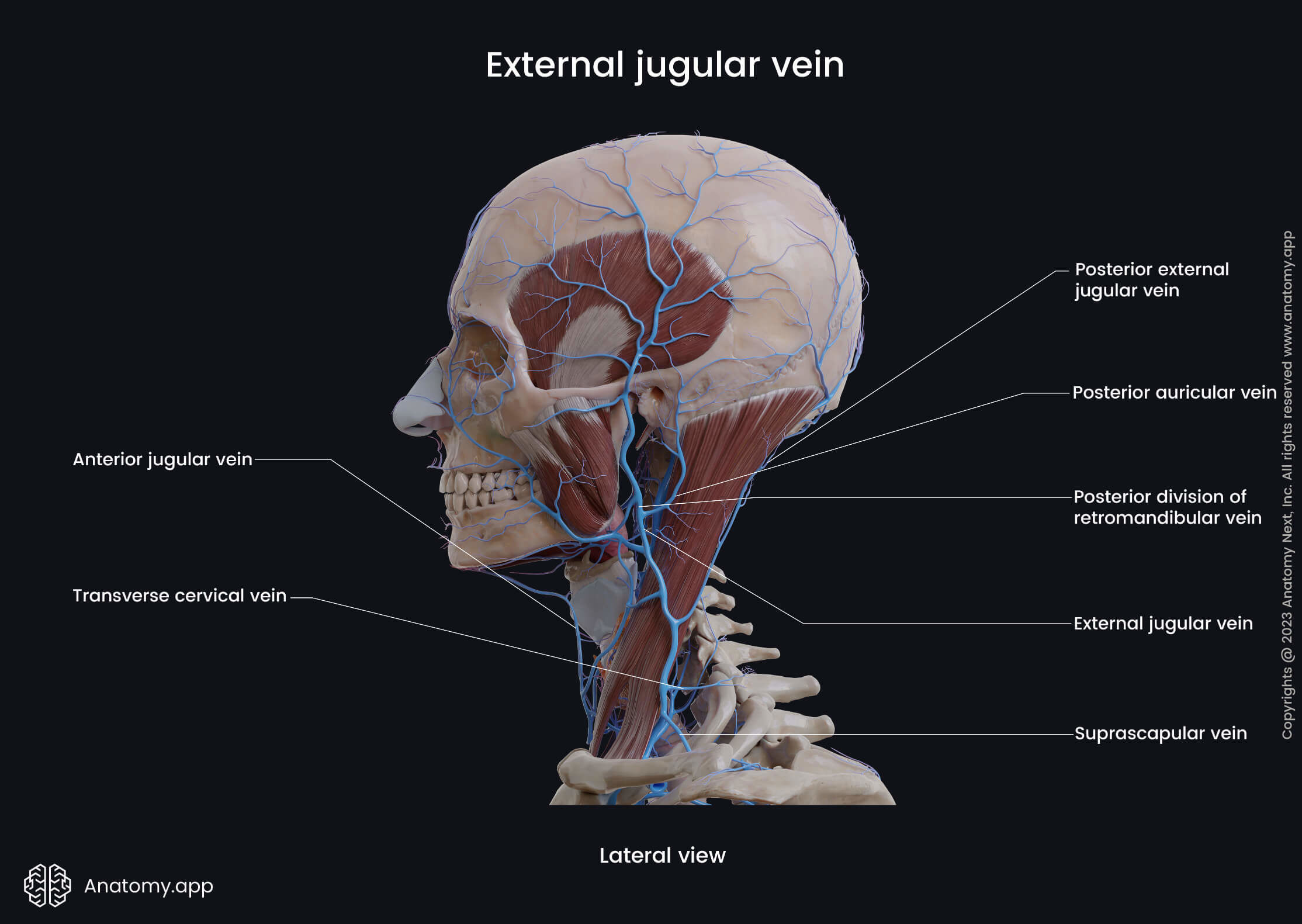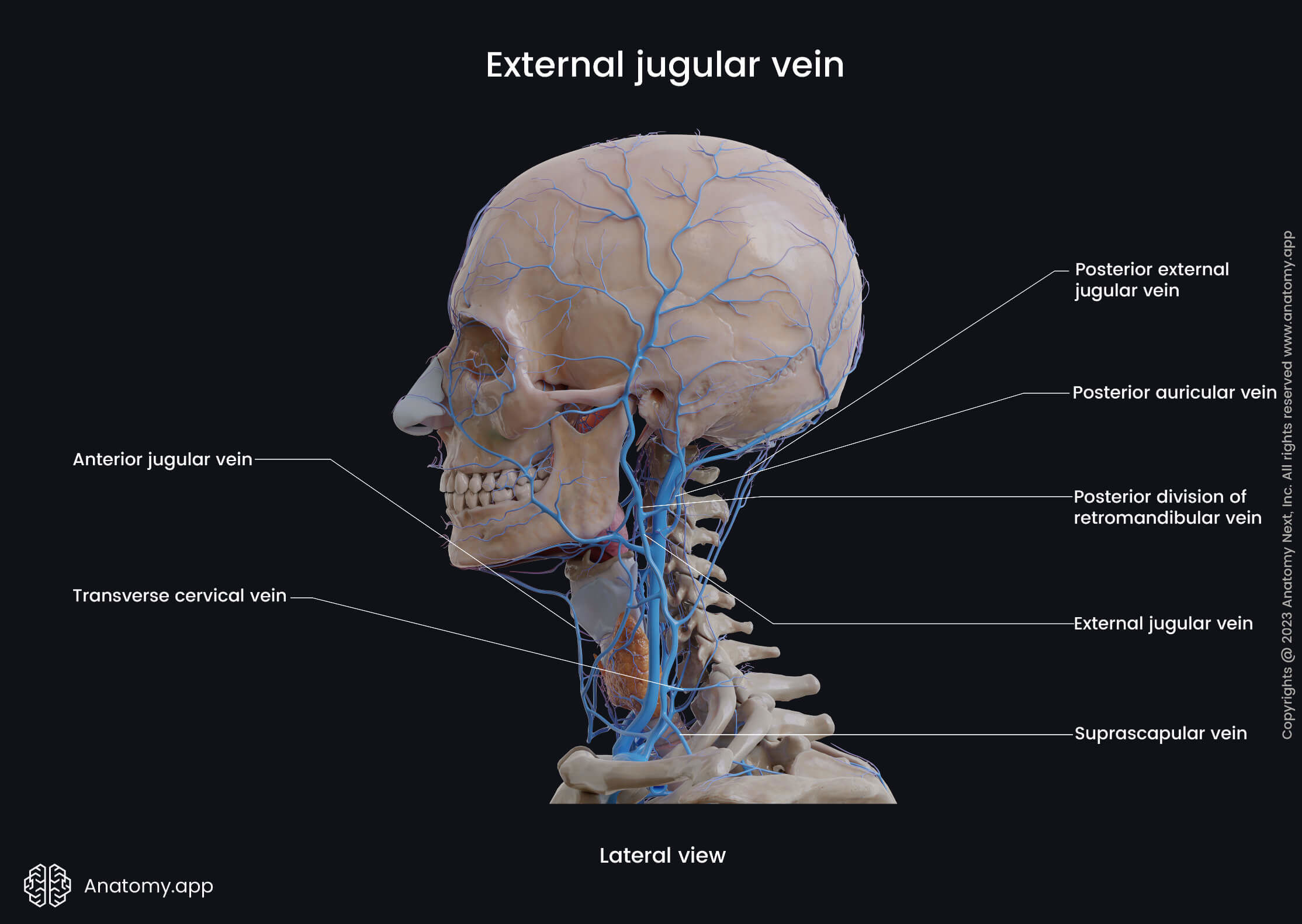- Anatomical terminology
- Skeletal system
- Joints
- Muscles
- Heart
- Blood vessels
- Blood vessels of systemic circulation
- Aorta
- Blood vessels of head and neck
- Arteries of head and neck
- Veins of head and neck
- Blood vessels of upper limb
- Blood vessels of thorax
- Blood vessels of abdomen
- Blood vessels of pelvis and lower limb
- Blood vessels of systemic circulation
- Lymphatic system
- Nervous system
- Respiratory system
- Digestive system
- Urinary system
- Female reproductive system
- Male reproductive system
- Endocrine glands
- Eye
- Ear
External jugular vein
The external jugular vein (Latin: vena jugularis externa) is a superficial vein of the neck that is formed by the union of the retromandibular vein and the posterior auricular vein. It collects blood from the scalp, face, neck, and the superficial muscles of the back.
The external jugular vein originates from the angle of the mandible, descends to the clavicle and the root of the neck, penetrating the deep cervical fascia and draining into the subclavian vein. The main tributaries of the external jugular vein are:

